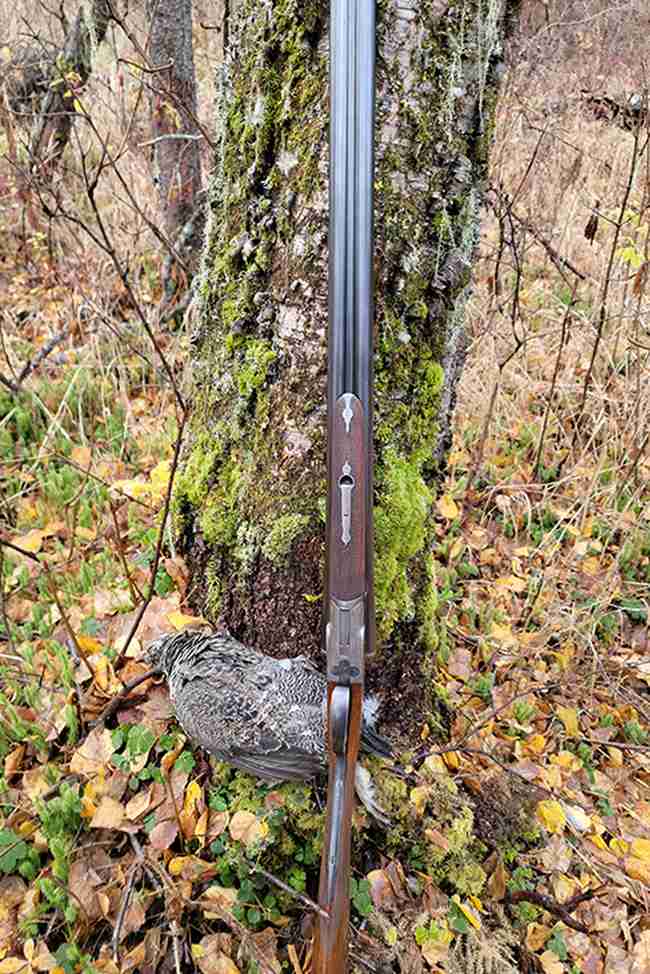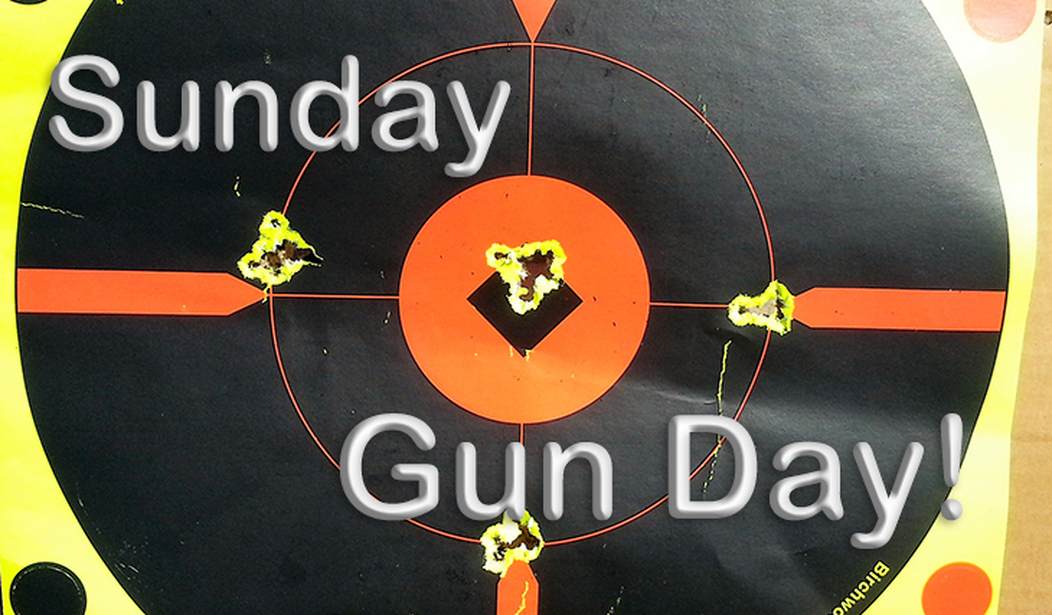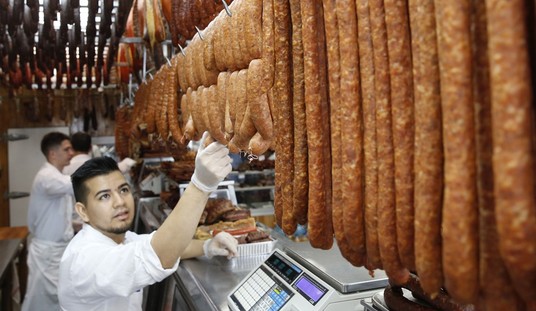Folks who are, like me, of outdoorsy persuasion, like to talk about big game hunting. Why? Because it’s exciting. Big stuff with horns, hooves, and pointy teeth are more exciting to hunt, and to talk about.
But when it comes to hunting opportunities, you can’t beat small game. The amount of time you can spend afield in pursuit of small game far outweighs limited big-game seasons, and anything from squirrels to pheasants produces some of the best eating you’ve ever laid teeth on. And, for the prepper/TEOTOWAKI set, small game hunting for food is far more likely to be a problem you need to solve than fighting off Mad-Maxian bands of raiders.
So, let’s look at arms and equipment for small stuff.
Small Game Rifles
Rimfire rifles kind of rule the roost for small game hunting nowadays, but it was not always thus. One of the best small-game cartridges around back in the day is the old .25-20, still available in the great old Winchester 92 if you’re willing to shell out the bucks for and shoot a collectible. The Winchester 43 bolt gun was also available in this fine old round, and likewise commands a high price. The .25-20 is a great small game round when loaded moderately with a hard-cast lead bullet, killing game up to woodchuck size very nicely without tearing up as much meat as a .22 high-velocity hollow point. But centerfire rifles for this and similar old small game rounds aren’t made today, with one exception: The .22 Hornet.

Factory loads in the .22 Hornet aren’t too useful for small game. It’s a good 125-yard varmint round as factory-loaded, useful up to coyote-sized critters at those ranges, but factory loads do too much damage on small game. But loaded with (again) a hard-cast lead bullet at moderate velocities, it becomes a great round for rabbits, hares, squirrels, and marmots. I keep one, a Ruger #3, as a fall turkey rifle; with the same kind of loads it will put down a big turkey inside of 100 yards right now. And here’s the fun part: If you have a good .22 Hornet rifle but would really, really like a .25-20 for the tad extra bullet diameter or just because you want one, you could have a barrel made; the two cartridges share a case head. But that sounds like an expensive proposition.
Let’s face it; in today’s small-game rifle world, rimfires are where it’s at, and there’s no sign of that changing any time soon. While I’ve advocated for years for the return of a mid-caliber rimfire like the old .25 Stevens, I’m probably not going to see that happen.
I won’t discuss the various .17 rimfires, as I’ve never owned or shot one. I’ll leave the well-informed readers to discuss those in the comments. There are at present several .22LR rifles kicking around the gun safe in our rural Alaska home, but the one I set up for just such precision shooting, I kind of ended up outsmarting myself; I did the full-blown Ruger 10-22 conversion, with a .920” target barrel, a laminated Fajen thumbhole stock, and a big target scope; the rifle shoots like a dream but weighs as much as many a big-game rifle. A .22 should be light and handy.
But while the .22 Long Rifle and the .22 WMR are both well-suited for most small-game work, the .22 WMR is more versatile. Why? Because the .22WMR will handle game up to the size of big marmots, foxes, and at close ranges, coyotes. The .22LR would not be advisable for larger animals like those, even with precise shot placement.
That doesn’t mean the .22LR rifle isn’t great for most small game. Back in the day, my friends and I killed a whole bunch of rabbits and squirrels with .22LR rifles; ammo was cheap and plentiful, and so were the guns. But even out of a rifle, it runs a tad on the weak side for the big hares, marmots, and foxes, even with the high-velocity hollow-point rounds. That’s where the .22WMR shines, as the 40-grain jacketed hollow-point will easily kill big hares, foxes, and marmots out to about a hundred yards, and with the full-jacket solid loads available, it won’t mess up too much meat on smaller game. Find you a rifle for either cartridge that’s light, easy to carry, and accurate. The Ruger 10-22 is available everywhere and they’re great shooters. The famous old Marlin 60 is cheaper, and millions have been made. There are far too many options to talk about here.
But it’s not always easy or convenient to tote around a rifle, even a .22, so let’s talk about…
Small Game Handguns
Something that seems to have fallen out of the shooting world is the “kit gun,” usually a small-frame .22 revolver intended for taking small game at short range. The Smith & Wesson .22-32 Kit Gun was one such. There are many good examples; I keep a pre-Model 17 Smith & Wesson K-22 in .22LR for such things, and it’s seen a fair amount of use on spruce grouse in early fall, when we routinely plink dumb young birds out of trees with .22 handguns. The old Smith is fussy about ammo, preferring CCI Green Tags over anything else, but with those, it puts down grouse and rabbits handily without destroying too much meat if head shots aren’t possible.
But here’s the cool thing about handguns: Most of them up to the .357 Mag will do great on even small stuff like rabbits, with the right load. A .44/45 will work if you go for head shots, but the smaller guns are even good for body shots on rabbits and grouse with FMJ or hard lead pills. A .357 loaded with .38 wadcutters is great for rabbit-sized game; a 9mm with FMJ bullets will kill quickly without messing up too much meat. Find a moderate load with a non-expanding bullet and you’re set for opportunity shots at small game. The .32 centerfires are great, too, and happily, there has been something of a renaissance in .32 revolvers lately.
As with anything handgun-related, the gun that’s most useful is the one you can shoot well.
But the most versatile small game gun has yet to be discussed, so let’s move on to…
Small Game Shotguns
Short answer: You can’t go wrong with a 12-gauge pump shotgun. With that said, there are always other options, but let’s talk about the good old 12-gauge pump first.
You might ask: “Why a 12-gauge, and why a pump gun?” Well, I’ll tell you; there are two main reasons.
- Availability of ammo. 12-gauge shells are ubiquitous. You can get ammo from 2 ¾-inch light trap loads to 3 ½-inch Roman candles, in every shot size known to man, and you can get them anywhere. You can get mil-spec or 3-inch mag buckshot, slugs, and oddball shells like Dragon’s Breath. The versatility of the available 12-gauge factory ammo makes it an obvious choice.
- Ruggedness, reliability, and versatility. Pump-guns are tough, easy to operate, and not prone to the fussiness about ammo that affects some semi-autos. If you’re a southpaw, you can find an Ithaca 37 or a Browning BPS that features bottom ejection, so you don’t have spent shells flying across your field of vision. There are literally millions of new and used pump shotguns available, which makes them something of an obvious choice.
I’m something of a fan of the 16 gauge, and the 20 is still widely available and a good choice for kids or the small-framed, but if you can only own one shotgun, buy a 12. If you can only own one gun, buy a 12-gauge pump-gun.
No matter what the gauge, the key to various types of small game is selecting the right choke, load, and shot size. Look here:
- Quail/grouse/doves: Low-base loads, 7 ½ or 8 shot (AA trap loads are great here.) An improved cylinder choke is enough for what is normally close shooting on quail and grouse, but open-country doves require an Improved-Modified or Full choke.
- Pheasant/rabbit/partridge: 2 ¾-inch field loads, 5 or 6 shot. Modified, Improved-Modified chokes are best.
- Hares/late season pheasant/sage grouse: 3-inch magnums, 4 or 5 shot. Choke as above.
- Spring turkey: 3 or 3 ½-inch magnums, buffered 4 or 6 shot. Most spring turkey hunters favor tight chokes, and there are quite a few full and extra-full specialty turkey choke tubes floating around the market.
There are special cases for waterfowl, but that’s probably a discussion for another day.

Now, there are other guns than pump guns, of course. Lots of folks prefer semi-autos, and the newer guns are more versatile than, say, the old Browning Auto-5 with its bearing bands that had to be reversed when moving from light to heavy loads. (I still love my Belgian Brownings.) Doubles are still popular, and few shotguns handle as sweetly as a well-balanced side-by-side or over-under; and almost no guns are as beautiful as a well-made, engraved side-by-side stocked with a nice piece of walnut.
I have one such, a lovely, 6-pound 12 gauge side-by-side double, hand-made by a Brit gunsmith named Henry Tolley in 1892. The Damascus barrels are sleeved and nitro-proofed, but I have to buy 2 1/2-inch low-pressure loads from a Brit manufacturer; it’s worth it. The gun is light, handy, and quick, and the 2 1/2-inch #7 shot loads will tumble spruce grouse very handily. I hope I’m in that good of shape when I’m 130 years old.
If your budget is tight, single-shots can be had for under a hundred bucks. And there are also several neat combination guns out there, such as my own Stevens 24D, with a .22 WMR barrel over a 20-gauge shotgun barrel; it’s neat and versatile, but I’ll talk about combination guns another time.
Now, if you are in a place where you must be quiet…
Small Game Air Guns
Air guns have come a long way since the Crosman pump-up BB gun I toted around when my age was still in single digits. In fact, if you read up on the Lewis & Clark expedition, they had come a long way before that, but let’s focus on today.
Air guns have a few things going for them. Ammo Is cheap; they can be purchased in most civilized places without all the hassles about background checks and associated paperwork; they are quiet, which can be advantageous for discreetly disposing of pests in a built-up area. A good air gun for small game should be able to deliver 600fps or better with either a .177 or .22 lead pellet; I prefer the .22 but either will work OK on squirrel/rabbit-sized game at short range.
A good pump-up pellet pistol can be handy for discreet things as well, say if you have some bedraggled, exhausted house finches dragging baby cowbirds twice their size to your feeder. Now, it’s illegal to shoot the nest-bandit cowbirds and their freeloading offspring. I’m not saying I would use an inaudible, discreet pellet pistol to quietly dispose of such a pest; that would be illegal. But if someone wanted to do so, a pump-up .22 caliber pellet pistol would sure get the job done.
Trapping
This is just a tad off-topic, but trapping can be fun and even somewhat profitable, although not as profitable as it was back in the Seventies when I trapped every winter; the decline in popularity of fur garments and the rise of farmed furs, which are more consistent in color and quality, has led to a crash in wild fur prices. But trapping can be a good way to get small game in a survival situation. A steel trap or coil of snare wire has a big advantage over, say, a .22LR or 12-gauge shotgun cartridge; you can catch an edible critter in a trap, clean and re-set the trap and use it again. Once a round of ammo is expended, it’s expended.
When I was a little tad back in Allamakee County, Iowa, shortly after the Earth’s crust finished hardening, I kept myself in .22 shells and pizzas by running a trapline in the winter. Mostly muskrats and raccoons but the occasional fox or mink; I never focused much on trapping edible game (although raccoon isn’t bad stewed), but the principles involved in trapping, say, rabbits, are pretty much the same. Here in Alaska, trapping is still a popular pastime and, for many Alaskans, forms a significant part of their annual income.
Conclusions
Small game hunting is loads of fun. Seasons are measured in months instead of days or weeks, which means you can be a little choosier about the weather you want to deal with. Bag limits are often generous, you can bring in some healthy, free-range, additive-free, low-fat protein, and spend plenty of time out in the great wide open. Licenses are cheaper. And these days, in our increasingly shut-in, urbanized population, competition for game isn’t all that tough. And if you need a break from the never-ending Second Amendment arguments, getting outside is a good way to do that.
Find you a good shotgun and bring in some bunnies or birds. You won’t regret it.













